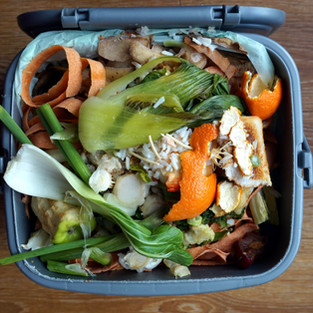Data decisions and researching food waste
- Molly Gallant
- Mar 18, 2019
- 3 min read
Updated: Aug 12, 2019
We are hearing more and more about food waste in the news. New and often contradictory estimates are regularly presented regarding the social, economic and environmental impacts of food waste. When interpreting these results, there are a couple of important things to keep in mind.
Households in particular have been shown to be responsible for up to 50% of total food waste generation in Canada. In this post, we're discussing some of the different methods commonly seen in the literature to quantify household food waste.
First up, consumer surveys.

A common and more budget-friendly method of assessing an issue like this is to design a survey that addresses specific research questions. However, there are some significant drawbacks to this method.
For example, a survey conducted in the United States looking at consumers’ reported awareness, attitudes and behaviours surrounding food waste found some interesting results. Among their participants, they observed widespread self-reported awareness and knowledge about food waste to be an issue. Approximately three-quarters of respondents stated that they waste less food than the average American.
Does this mean that the remaining one-quarter of Americans are indeed responsible for the majority of food waste generation in America? Highly unlikely.
What’s more likely, is one of two options, both of which the literature identifies as commonly contributing to inaccurate consumer perceptions of food waste.
First and foremost, we see in the literature that food waste is the result of both conscious and unconscious behaviours. It is quite possible that consumers are simply unaware of just how much food they waste, and are therefore unable to report on it accurately. Furthermore, a study conducted by our research group in Guelph found that consumers are reluctant to identify themselves as someone who wastes more food than others in their social circle.
The second theory is that, given the social bias around food waste, participants in surveys are reluctant to tell the truth – especially if the truth is ugly (and when it comes to food waste, it often is). Instead, they will give what they perceive to be the “socially-desirable” response. This is similar to the virtue signalling phenomena that occurs when surveying consumers about vegan and vegetarian diets, as discussed in a previous blog post.
The gap between what people say they do and what they actually do has prompted researchers to look for other methods to assess household food waste.
Which brings us to method #2: Kitchen Diaries.
This method requires households to maintain a daily log of the food waste they generate. Detailed comments such as weight or volume of food waste, time of disposal, destination of waste, state of food and reason for discard are recorded. This method generates a more fulsome assessment of household food waste. When considered alongside surveys can provide additional demographic and attitudinal details.
Although more accurate and detailed than a simple survey, the self-reporting nature of this method may still lead to some inaccuracies. Under-reporting (be it intentional or unintentional) and recruitment bias are significant limitations to this approach. In fact, a study conducted in the UK using kitchen diaries found that consumers underreport quantities of food waste by up 40%! Not to mention the difficulty of recruiting for this kind of study. The required daily logs can be quite labour-intensive and unless the participants are highly-engaged or there is a significant incentive for participation, drop-out rates are often high.
In order to circumvent the issues with self-reporting, researchers have turned to the streets where lie carts, bins and bags of all shapes and sizes waiting to be examined.
You guessed it, this brings us to option three for food waste data collection:
Waste Composition Studies.
Waste composition studies involve physically separating, weighing and categorizing food waste. This method is useful in overcoming under-reporting issues and participant biases. By collaborating with local waste services, this can be a highly effective and objective method of quantifying food waste.

Inevitably, there remain some limitations with this approach as well. This method only accounts for food waste destinations associated with municipal solid waste streams. Any waste disposed of down the drain or using backyard composting will be missed with this technique.
Furthermore, extensive resources as well as strong municipal partnerships are required to make this work.
There are certainly trade-offs with each approach I’ve discussed here. However, the potential to refine these methods certainly exists. As this area of research grows, we can look forward to better and more accurate data coming forward demonstrating the true breadth and complexity of the food waste problem.
With improved data collection methods we can be sure to better inform interventions designed for sustainable behaviour and reducing food waste generation.
Recommended citation format: Gallant, M. “Data decisions and researching food waste”. Food Focus Guelph (16), Department of Food, Agricultural and Resource Economics, University of Guelph, March 18th, 2019.






I was skeptical about lectura del tarot Chicago, but after my session in I am convinced. The tarot reader was very accurate in her readings and provided me with valuable tools to address my challenges. I feel more empowered and directional. Highly recommended.